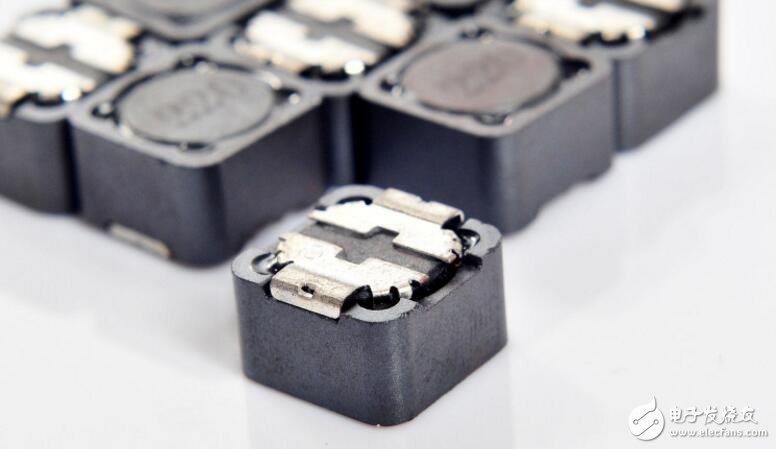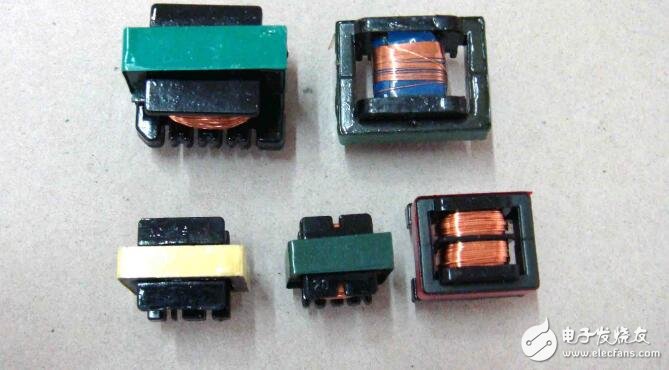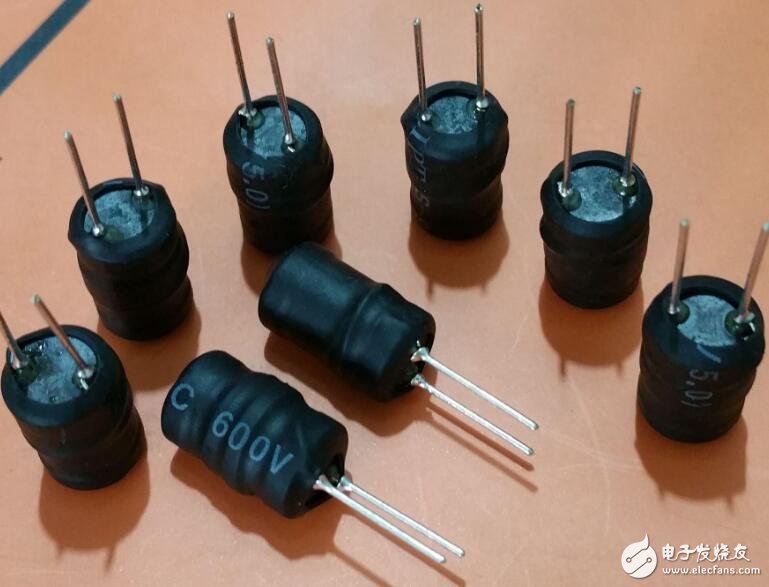The inductance is the ratio of the magnetic flux of the wire to the current in which the flux is generated when the alternating current is passed through the wire and the alternating magnetic flux is generated in and around the wire.
When a direct current is passed through the inductor, only a fixed magnetic line of force is present around it, which does not change with time; however, when an alternating current is passed through the coil, magnetic lines of force appearing around it will appear around the time. According to Faraday's law of electromagnetic induction, magnetic generation, the varying magnetic lines produce an induced potential at both ends of the coil. This induced potential is equivalent to a "new power supply". When a closed loop is formed, this induced potential generates an induced current. It is known by Lenz's law that the total amount of magnetic lines generated by the induced current is intended to prevent the change of the original magnetic lines. Since the original magnetic field line changes from the change of the external alternating current power supply, the objective coil has the characteristic of preventing the current change in the alternating current circuit from the objective effect. Inductor coils have similar characteristics to the inertia in mechanics. They are electrically named "self-sensing". Usually, when the knife switch is turned on or the knife switch is turned on, sparks will occur. This is the phenomenon of self-inductance. Highly induced by the induced potential.
In short, when the inductor coil is connected to the AC power source, the magnetic lines of force inside the coil will change with the alternating current, causing the coil to continuously generate electromagnetic induction. This electromotive force generated by the change of the current of the coil itself is called "self-induced electromotive force". It can be seen that the inductance is only a parameter related to the number of turns of the coil, the size and shape, and the medium. It is a measure of the inertia of the inductor and is independent of the applied current.

The characteristics of the sensor are exactly opposite to those of the capacitor. It has the characteristic of preventing the passage of alternating current and allowing the direct current to pass smoothly. When the DC signal passes through the coil, the resistance of the wire itself is small. When the AC signal passes through the coil, the self-induced electromotive force will be generated at both ends of the coil. The direction of the self-induced electromotive force is opposite to the applied voltage, which hinders the passage of AC. Therefore, the characteristics of the inductor are DC and resistance AC. The higher the frequency, the greater the impedance of the coil. The inductor often works with the capacitor in the circuit to form an LC filter, an LC oscillator, and the like. In addition, people also use the characteristics of the inductor to manufacture the choke, transformer, relay and so on. Through DC: It means that the inductor is in the off state of DC. If the resistance of the inductor is not counted, the DC can pass through the inductor “unimpededâ€. For DC, the resistance of the coil itself is very little hinder to DC. It is often ignored in circuit analysis.
Resisting AC: When the AC power passes through the inductor, the inductor has an obstructive effect on the AC power, and the AC current is the inductive reactance of the inductor.

The inductor is generally composed of a skeleton, a winding, a shield, a packaging material, a core or a core.
1. The skeleton skeleton refers to the bracket for winding the coil. Some large fixed inductors or adjustable inductors (such as oscillating coils, chokes, etc.), most of which are wrapped around the enamel wire (or yarn wrapped wire), then the core or copper core, iron core, etc. Load the inner cavity of the skeleton to increase its inductance. The skeleton is usually made of plastic, bakelite or ceramic, and can be made into different shapes according to actual needs. Small inductors (such as color code inductors) generally do not use a skeleton, but directly wrap the enamel wire around the core. Hollow inductors (also known as tire coils or air-core coils, mostly used in high-frequency circuits) do not use cores, skeletons, and shields. Instead, they are wound on the mold and then removed from the mold. Open a certain distance.
2. Winding winding refers to a group of coils with specified functions, which are the basic components of the inductor. The windings are divided into single layers and multiple layers. The single-layer winding has two forms of tight winding (one turn of the wire in the winding process) and inter-winding (each wire is separated by a certain distance between the windings); the multilayer winding has layered flat winding and chaos Winding, honeycomb type winding and so on.
3. Magnetic core and magnetic rod core and magnetic rod are generally made of nickel-zinc ferrite (NX series) or manganese-zinc ferrite (MX series). It has a "work" shape, a column shape, a hat shape, and an "E". Shapes, cans and other shapes.
4. The iron core material mainly includes silicon steel sheet and permalloy, and its shape is mostly “E†type.
5. Shield to increase the magnetic field generated by some inductors during operation to affect the normal operation of other circuits and components, it adds a metal screen cover (such as the oscillation coil of a semiconductor radio, etc.). Inductors with shields increase the loss of the coil and lower the Q.
6. Packaging Materials After some inductors (such as color code inductors, color ring inductors, etc.) are wound, the coils and cores are sealed with packaging materials. The packaging material is made of plastic or epoxy resin.

The inductance is also called the self-inductance coefficient, which is a physical quantity indicating that the inductor generates self-inductance. The amount of inductance of the inductor depends mainly on the number of turns of the coil (number of turns), the winding method, the presence or absence of the core and the material of the core, and the like. Generally, the more coil turns, the denser the wound coil, and the greater the inductance. A coil with a core has a larger inductance than a coil without a core; a coil with a larger magnetic permeability has a larger inductance.
The basic unit of inductance is Henry (referred to as Henry), which is indicated by the letter "H". Commonly used units are millihenry (mH) and microhenry (μH). The relationship between them is:
1H=1000mH
1mH=1000μH
VOZOL BAR 2200 Vape are so convenient, portable, and small volume, you just need to take them
out of your pocket and take a puff, feel the cloud of smoke, and the fragrance of fruit surrounding you. It's so great.
We are China leading manufacturer and supplier of Disposable Vapes puff bars, vozol bar 2200 disposable vape,
vozol bar 2200 vape kit,vozol bar 2200 puffs vape, and e-cigarette kit, and we specialize in disposable vapes,
e-cigarette vape pens, e-cigarette kits, etc.
vozol bar 2200 disposable vape,vozol bar 2200 vape kit,vozol bar 2200 puffs vape,vozol bar 2200 vape pen,vozol bar 2200 e-cigarette
Ningbo Autrends International Trade Co.,Ltd. , https://www.mosvapor.com